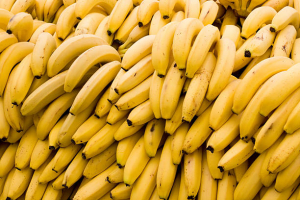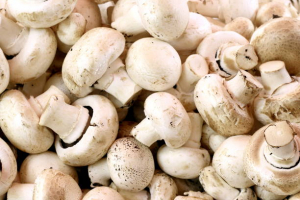Top 10 World's Different Types Of Melons
Melons are popular seasonal fruits enjoyed all over the world. Did you know that melons have been around for more than 4,000 years? And there are more than ... read more...thirty varieties of melons in the world. Of course, everyone knows watermelons and cantaloupes and many others are enjoyed in regions where they are grown. But to enjoy these exotic tastes you must find them out first. Below is a list of the different types of melons in the world, let's find out!
-
Thousands of years ago, Egypt was where Watermelons were first domesticated. A cool delight in the summer heat when it's advised to eat, the striped green exterior and vivid red, sweet, and juicy interior make for a colorful treat. China now accounts for nearly two-thirds of all global production of watermelons, making it the largest producer in the world.
Citrullus lanatus is the name given to it in the scientific community, and it grows on a creeper, a plant that sprawls out on the ground. According to studies, watermelons are beneficial for the kidneys, and the heart, and are packed with antioxidants. Watermelon is a refreshing treat to help you stay hydrated in the summer heat.

iStock 
The Spruce -
Bitter Melon (Momordica charantia) is a tropical vine that belongs to the gourd family and is closely related to zucchini, squash, pumpkin, and cucumber. Because it aids in diabetes and heart illnesses, bitter melon is a well-liked variety of melon. In regions where it was domesticated, including India and Southeast Asia, it has long been consumed for good health.
Occasionally, it goes by the name "bitter gourd" due to its look like a long tube. Boils and vein-like patterns can be seen on the outer surface. It is consumed when it is still green, tender, and crunchy before it ripens. It turns yellow or reddish and hardens as it ripens. In several regional cuisines, bitter melon is prepared as a vegetable as well. Obviously, these people have found ways to remove its bitterness and savor it.
Pinterest 
Pinterest -
Canary Melons are believed to be a type of muskmelon, which were first discovered growing in Persia and the surrounding region. Muskmelons were transported from Persia to Egypt in ancient times, and the oldest known record of the melons was traced to around 2400 BCE in Egypt, depicted in a drawing of funerary offerings. This melon's flavor is renowned for its particular tanginess. It has a taste similar to that of regular melons with a tart flavor like citrus. In South America and Asia, it is frequently consumed fresh and as fruit salad.
The species is also known as the winter melon and is scientifically known as Cucumis melo in the Inodorus group. From the outside, the melon is smooth and vivid yellow. The interior of the rather oblong-shaped fruit contains seeds that are distinct from the remaining fruit flesh. The flesh might be clear white, light green, or occasionally even yellow. In South America and Asia, it is frequently consumed fresh and as fruit salad.
Wikimedia 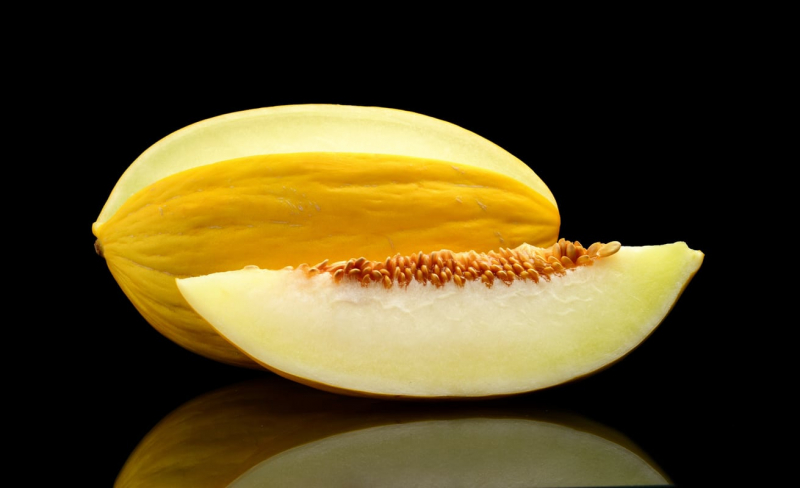
Gardening Know How -
The Cantaloupe, rockmelon (Australia and New Zealand, although cantaloupe is used in some states of Australia), sweet melon, or spanspek (Southern Africa) is a melon that is a variety of the muskmelon species (Cucumis melo) from the family Cucurbitaceae. It is thought that the fruit first appeared halfway between Africa and India. Today, it is produced commercially in several nations, including the US, and consumed practically everywhere.
Once more, China tops the globe in cantaloupe production, accounting for more than half of the total. Even the fruit's seeds are utilized as snacks. The fruit is typically eaten cold with cream or custard. They feature a netted external cover and a fleshy inside with seeds that is either pale orange or yellow.
The Spruce Pets 
The Spruce Eats -
The Casaba Melon originated in Kasaba, Turkey, and was brought to the United States in the late 19th century. The casaba melon is cultivated commercially in South America and the southwestern United States, mainly California and Arizona, despite the fact that it is native to Asia Minor.
Casaba is less well-known than some of its relatives, mostly because it is not as sweet or flavorful as other melon cultivars. It has a very thick rind, and the external appearance of the fruit differs significantly from that of the honeydew and the cantaloupe. The long shelf life, juicy flesh, and mild flavor of the casaba melon, which many claims has more in common with a cucumber than a honeydew or a cantaloupe, are its main advantages. This makes sense because cucumbers and melons both come from the genus Cucumis.

Wikimedia 
Melissa's Produce -
A Charentais Melon is a type of French cantaloupe, Cucumis melo var. cantalupensis. It is smaller than other melons in size. comparable to a softball in size. In comparison to other cantaloupes, the internal flesh is deeper in hue. Usually pink or orange. Additionally, it has a distinctive scent that sets it different. Hybrids of this variety are widely grown, they are generally crossed with North American cantaloupes for better shipping characteristics and larger size.
Unlike most cantaloupes, which have a netted skin, this one has stripes running from the stem joint to the opposite end, making a ribbed pattern. Due to its delicate skin and tender flesh, it is rarely encountered elsewhere because it cannot withstand long-distance shipment.

Rungis Market 
Maison Duffour -
The Galia Melon, also known as Sarda in Southeast Asia, is a type of F1 hybrid melon originating from a cross between the green-flesh melon cultivar 'Ha-Ogen' and the netted-rind melon cultivar 'Krimka'. Developed in Israel at the Ne´ve Yaar Research Center of the Agricultural Research Organisation by the melon breeder Dr. Zvi Karchi, and released in 1973, the Galia melon was named after Karchi's daughter, whose name means "God's wave" in Hebrew.
An irregular, thick pattern of intersecting lines can be seen on the exterior covering. As it ripens, it changes from green to yellow and emits a potent perfume. Their widespread use is a result of their ease of growth and success in transportation. Currently, they are grown in Egypt, Morocco, Spain, Brazil, and Turkey.
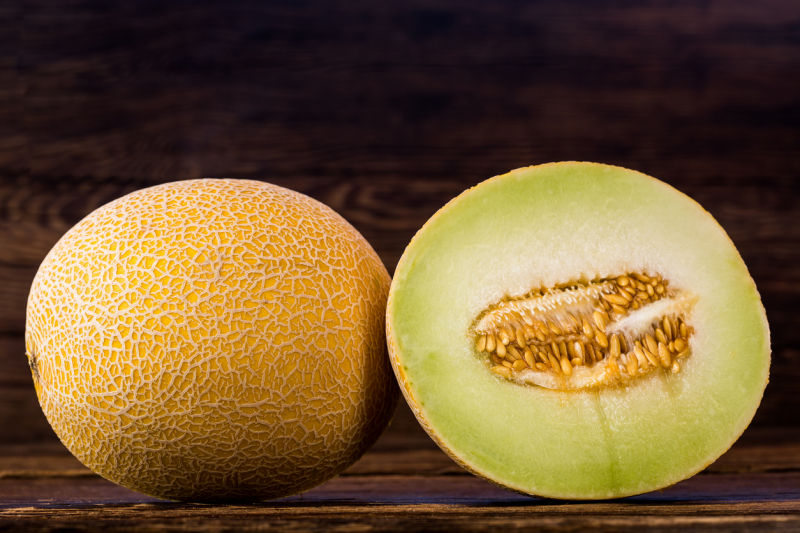
Gardening Know How 
iStock -
Gấc (botanical name: Momordica cochinchinensis) is a type of perennial melon grown throughout Southeast Asian countries and Northeastern Australia. Gấc grows as dioecious vines, meaning its male and female flowers are on separate plants, producing flowers typically 5–10 centimeters in length. Its vines can extend to 20 meters (70 ft) long, and its flowers bloom once a year, single or in bundles, around two to three months after the vines are planted. In one season, a plant can produce from 30 to 60 fruits.
This is a little melon with bright orange skin covered in numerous tiny spikes. An edible coating of light orange to yellow is seen in the interior first. It is typically not consumed. The juicy, meaty, crimson portion that is dotted with seeds is the section that is sought. You must make an effort to consume the sweet fruit without eating the seeds, just like with a watermelon.
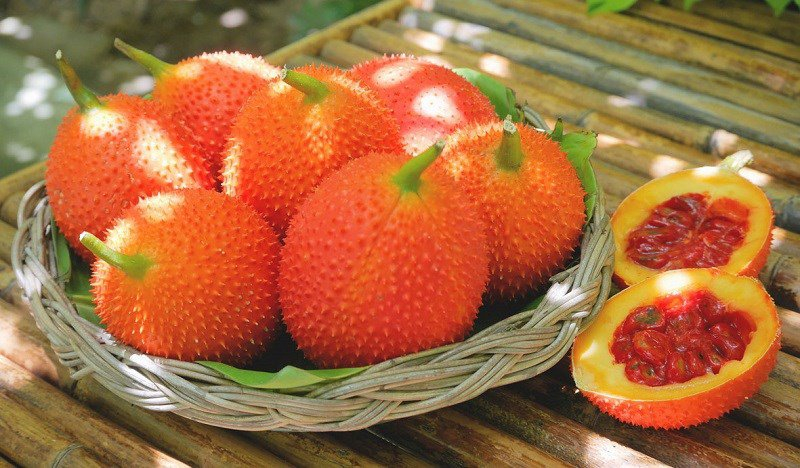
Vinmec 
ASMY -
The Honeydew Melon is one of the two main cultivar types in the Cucumis melo Inodorus Group. This melon's name accurately depicts its flavor. Smooth throughout, the flesh is a light green tint, occasionally a yellowish hue. The outer layer is waxy and also yellow in hue. The waxiness of the outer surface is also a determiner of a ripened honeydew melon as otherwise, it’s hard to know.
The B vitamin thiamine, along with other B vitamins and the mineral potassium, is all present in abundance in honeydew. Additionally, at only 36 calories per 100g, it has fewer calories than several other fruits high in potassium, such as bananas. The majority of other vitamins and minerals, however, are only present in trace amounts in honeydew.

Wikimedia 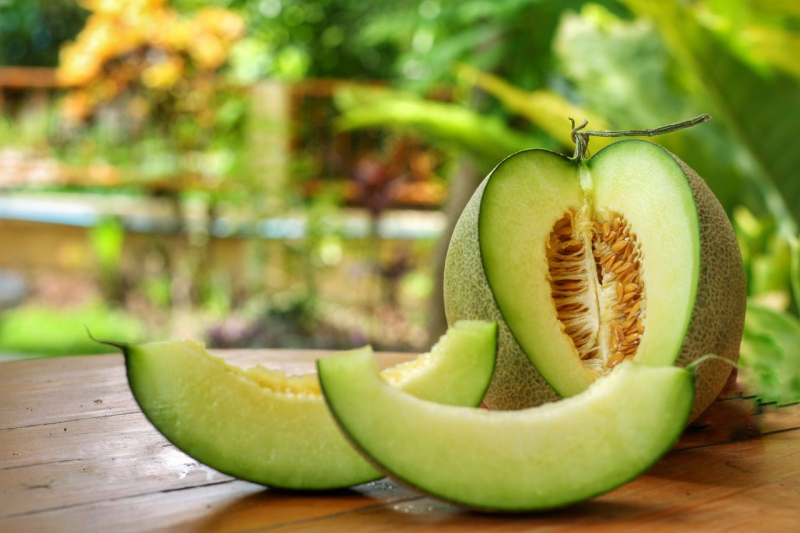
HealthifyMe -
Cucumis metuliferus, commonly called the African horned cucumber, Horned Melon, spiked melon, jelly melon, kiwano, or cuke-a-saurus is an annual vine in the cucumber and melon family, Cucurbitaceae. Because of the numerous spikes on the outer skin cover, it may be distinguished from other melons. South Africa, Namibia, and Angola are among the nations in Southern Africa where the fruit naturally grows.
It is rich in water and is used as one of the sources in the dry Kalahari Desert. Communities in the area have included it in their meals, and it is consumed as a salad or as a snack. The flavor of the juicy flesh has been compared to a blend of lime, citrus, and banana. One of the world's most delicious melon varieties is this one.
Healthline 
Birds and Blooms
















